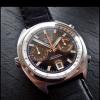Seiko Starfish Kinetic 5M23-7A30 Band Removal
-
Recently Browsing
- No registered users viewing this page.
-
Topics
-
Posts
-
By Neverenoughwatches · Posted
Last night's experiment coming up later today, i bought some Kerosene. Tested 6 fluids that are in common use for cleaning and a couple of interesting findings. -
By Neverenoughwatches · Posted
Had a rethink on my tweezer use yesterday, i must have 3 dozen old Dumonts , Bergeons, precista and various other good and cheap tweezers. So decided to scrap using my current choices and am now down to just 2 non brand makes. A very cheap Cousins brass pair that i dressed and polished to 2mm wide tips and a pair of antimag steel that have wide sides that i found amongst the pile and dressed these to fairly sharp tips and polished the ends leaving the handle which should have some friction built in ( who has had some tweezers slip right through their grasp and land right in the middle of a movement ? ). Working with them both yesterday on a Smiths diver was such a nice uncomplicated change, 95% of disassembly and reassemble is possible, the brass for turning the plate and fitting bridges plus some other concentrated gripping use and the steel for everything else. For repair adjustment and cleaning a few others take over, like a steel forked tweezer for pinning a stud, a thick tipped brass for turning a boot reg pin, very thin 4mm wide steel for barrel and mainspring work and obviously hairspring tweezers. There should be "for you" just the right amount of tension between the 2 blades, too much and you drop stuff when you lose concentration for a moment, too little tension and you will notice your fingers tremble much more as you try to resist the closing up on fine work, your finger muscles are attempting to match the tweezers tension output at low levels of tension , which is quite difficult. -
My worry is that coffee or other "edible" pigments will be hydroscopic, and encourage mould and rust to form. This happens to some degree with older lume anyway, but I think small amounts of acrylic paint or pigment powders might be a safer option.
-
Ok, I'll admit that @JohnR725 has a point here. First and foremost, YOU decide. And YOU have to be comfortable doing it. It's also good advice to finish the automatic Seiko before going to the next watch. In defense of the "encouragement" posted above: when I serviced the Tissot 783, it was actually my second automatic watch and it was only about one year ago. So I didn't forget how it feels being in your position. Without a doubt, there is a learning curve. But I, personally (!!!), found it quite doable. It was a simpler auto system than some ETAs, Omegas and Rolexes that I worked on afterwards. But very important: this is only gentle encouragement. Nobody here is "pushing you" to try. And that said, I fully support your decision to...
-
So, I did an experiment. Not a fair one, I'll warn already. I compared the performance of the automatic works with: a) old (but functioning) reversing wheel, cleaned and treated with V105 b) new ETA reversing wheel, taken as-is from the blister Test 1: signs of rotor spinning when manual winding --> both performed fine, but the new wheel was better (super smooth) Test 2: With the automatic works fully assembled but not installed in the movement, held vertically, let the rotor swing from a 90° angle. --> new wheel the clear winner As I said, not a fair comparison because I'm comparing an old wheel (functioning, but potentially with slight wear) with a brand new one. But still, I think it's sufficient confirmation that the potentially-old ETA wheels sold by CousinsUK are still in perfect condition despite their age and don't need new lubrication.
-






.thumb.jpg.cb17a66989f1e796fd4217db2e9ca9df.jpg)

Recommended Posts
Join the conversation
You can post now and register later. If you have an account, sign in now to post with your account.
Note: Your post will require moderator approval before it will be visible.